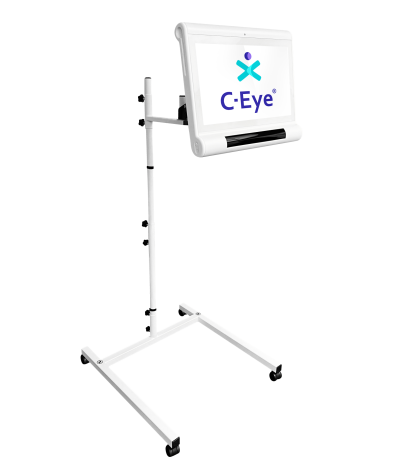Clinical trial: Eye Tracking Technology in the Diagnosis of Neurological Patients
Sponsor: AssisTech Sp. z o.o.
Sponsor’s representative responsible for the study: Dr.-Ing. Bartosz Kunka
Principal Investigator: Grzegorz Żurek, Prof.,Wroclaw University of Health and Sport Sciences
ClinicalTrials.gov ID: NCT05536921
https://beta.clinicaltrials.gov/study/NCT05536921
The aim of study is demonstrating that diagnostics of the state of consciousness and cognitive functions of patients with consciousness disorders performed using C-Eye X (based on eye-tracking technology) allows a more objective assessment of state of patients who were wrongly diagnosed based on popular methods using in a clinical practice (like behavioural scales on paper forms).
Another aim of this Study is to perform a clinical evaluation of the authors’ original battery of diagnostic tests in the C-Eye X system (based on eye-tracking technology), addressed to patients who have suffered damage to the central nervous system (CNS) with communication barriers. Validation is being conducting for 2 original diagnostic tests: MCSD (Minimally Conscious State Detection): to differentiate patients’ state of consciousness (for patients diagnosed as being in unresponsive wakefulness syndrome (UWS) or minimally consciousness state (MCS) and CFA (Cognitive Functions Assessment) to assess the level of preserved cognitive functions in patients (for patients diagnosed as being in at least minimally consciousness state minus (MCS–).
The intention of the project’s authors is to introduce a novel diagnostic solution that will help reduce misdiagnoses made for neurological patients with reduced consciousness, due to the inadequacy of current behavioural tools to work with patients after severe brain damage.

Participantsof Tests
Brain-damaged neurological patients with communication barriers, diagnosed as being in unresponsive wakefulness syndrome (UWS) or minimal consciousness state (MCS), for whom sight remains the only route of communication.
The number of analysed observations in Poland and Germany combined is: 90
Aims of study:
- Evaluation of C-Eye X system application in the neurological diagnostics of patients with reduced consciousness.
- Comparing the results of C-Eye diagnosis with those obtained from commonly used behavioural and psychological scales in the evaluation of patients with reduced consciousness.
- Demonstrating that diagnostics of the state of consciousness and cognitive function of patients with consciousness disorders performed using C-Eye X allows a more objective assessment of the condition of patients who, according to traditional methods, remain in no contact with the surrounding world.
Conducted tests:
Test 1: Minimally Conscious State Detection (MCSD Test)
Test consist of 6 subscales (including 11 points):
- Auditory sensitivity
- Visual functions
- Auditory-visual integration
- Command execution
- Autopsychic orientation
- Pressure localisation test
The MCSD Test is performed in 5 trials during 14 days of observation with intervals of at least one day between test repetitions.
The result of the completed test is an indicator of one of the following states of the patient’s condition diagnosis:
- UWS
- MCS –
- MCS +
Test 2: Cognitive Function Assessment (CFA Test)
Test consist of 6 subscales (including 24 points):
- Attention
- Language functions
- Visual-spatial functions
- Autopsychic orientation
- Memory
- Abstract thinking
The total number of points that a patient can obtain in a single trial for performing tasks in the CFA test is 24 points. The CFA Test is performed in 3 trials during 14 days at intervals of at least one day.
For the CFA test, the results will be presented as:
- the percentage value in each subscale related to the maximum possible value in the subscale,
- the percentage of the total score for all subscales of the test related to the maximum value possible for the test – 24 points.
the percentage value in each subscale related to the maximum value possible in the subscale.

